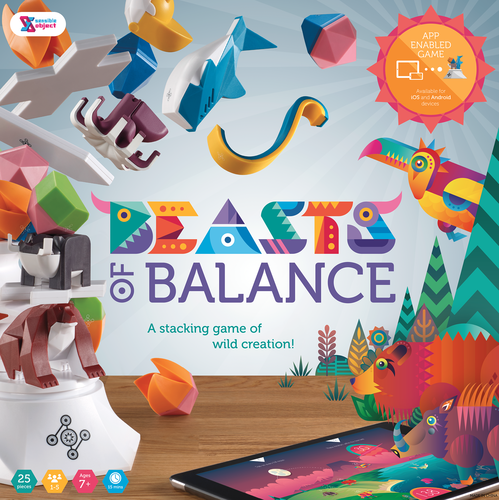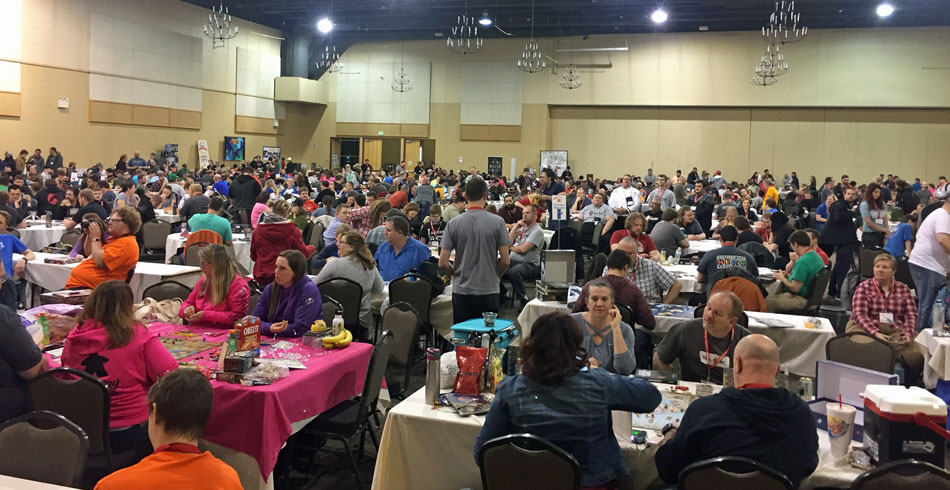UNIMO is like UNO with a theme
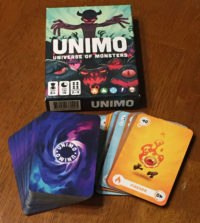
UNO is one of the most popular card games in the world.
Even though it was first published almost 50 years ago, it’s a relatively new card game when compared to other world-renowned card games still played today like Poker, Bridge, and Euchre.
Although it may be relatively new when compared to such games, we don’t think you’ll find anyone referring to UNO as a “new card game”. That’s because to most of us, UNO has always been around. And aside from a standard deck of playing cards, it’s also the most-likely card game you’ll find in homes today.
So it’s safe to assume that if you’re reading this, you know how to play UNO. And with that assumption in mind, today’s game review will be simple to cover.
It’s time to take a closer look at UNIMO!
How to play UNIMO
UNIMO is a card game published in Sweden last year after a successful Kickstarter campaign.
Like many card games, the objective in UNIMO is to be the first player to get rid of your hands of cards.
And it’s easy to understand the rules for playing cards from your hand because it’s very much like UNO.
There are 5 “Worlds” (types of colored cards) in UNIMO from which players choose a number of Worlds to use for the game (Fire, Ice, Rock, and Undead). It’s recommended to play with 1 World per player. So in a 4-player game, players will play with 4 different colors of cards. And each World set of cards has Energy values of 40, 50, 60, 70, 80, 90, and 100 plus 2 different World-specific special action cards and 4 neutral special action cards.
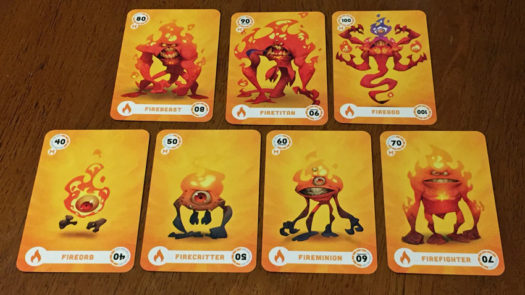
After shuffling together all the cards from the Worlds in play, players draw 8 cards to begin.
Then players take turns playing a card from their hand.
They can play either a Monster card or an Action card.
To play a Monster card, if it’s from the same World (color), it must either match or exceed the Energy value of the top card of the discard pile. To play a Monster card from a different World, it must match the Energy value of the top card.
Players can also discard more than one card on their turn if each card played has an equal Energy value. If 4 cards of the same Energy level are played in a row (by any player), the discard pile is set aside as a Graveyard pile. The player who created the Graveyard gets to go again and can play a card of any World and Energy.
World-specific Action cards must match the World of the top card to be played. But neutral Action cards can be played on any card. And when those are played, the player then picks which World must be played next.
Action cards include typical things like drawing extra cards, changing directions, or missing turns. But they also include things like switching hands, freezing cards, or pulling cards from the discard or Graveyard piles.
If a player is unable to play a card from their hand, they can choose to draw the top card of the draw pile. If the card they draw is playable, they can then play it. If that card can’t be played, then the player must take into hand the entire discard pile.
Players continue taking turns until one player has played all their cards. That player is the winner.
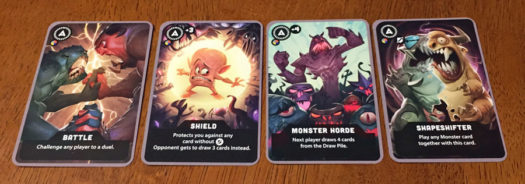
Can the whole family enjoy UNIMO?
UNIMO is a very simple game to understand and play.

And as such, it’s also an easy game for almost anyone to play.
We say “almost” anyone because the Action cards have text that players must be able to read. Granted it’s not complicated text, but it’s still a factor in the age of players being able to understand and play those cards.
The Action cards do add some twists to the game, but we wouldn’t categorize them as strategic. It’s still a very luck-based game which means players have a fairly equal opportunity to win.
We also really like the style of artwork on the cards. The cartoony style is very cool.
That being said, the cards are referred to as “monsters” and the creatures definitely look more menacing as they increase in Energy values. And the artwork on the Undead World cards looks even more terrifying than the others. So families may want to take that into account when deciding if UNIMO is a good game for their family.

Is UNIMO just UNO with fancy graphics?
As you can see, the game play in UNIMO is super similar to UNO. And even the name is almost the same.
There are a few “major” differences between UNIMO and UNO that they can’t be considered exactly the same game. But those “major” differences don’t seem to be much more than “house rules” for different ways to play UNO.
The biggest 2 differences from UNO are that the value of the card must be higher than the one on the top of the discard pile and that when you can’t play, you can choose to draw or not. The downside being that if the drawn card can’t be played, the player must take the entire discard pile.
We’re sure we’ve all played UNO so many times that we’ve added in a lot of “house rules” to the game – like Draw Two and Draw Four cards can stack or when a Zero is played, players pass their hand of cards to the player on their left and things like that.
While playing UNIMO, we couldn’t help but think someone took their UNO house rules and turned it into a standalone game with creative artwork and theme.

Here’s a bit of flavor from the game box, “We’re running out of time, the universe is expanding out of control. In your hand you hold the divine powers to create a new beginning. So be smart, make your moves, play your cards right and you’ll be crowned, master guardian and ruler of Unimo.”
Unfortunately, for us the theme falls flat and the game play is just too similar to UNO to feel fresh and fun.
They may be called “Worlds” with “Energy” values, but when playing we really only pay attention to the color of the cards and the number on them (just like in UNO).
Also, a major hurdle we’ve run into multiple times is having the game stall out because players don’t want to draw a card when they can’t play a card.
Once the Energy value gets up to 90 or 100 and players don’t have Action cards in their hand to “reset” the discarding at a lower value, it’s way too risky to draw a card. The chances that you’ll draw a playable card are pretty slim at that stage. So it’s most likely that you’ll have to take the entire discard pile into hand. And if you do that, you’re definitely not going to win the game.
Sure there’s the chance that a Graveyard has been created (by having 4 cards of the same value be played in succession), but more often than not, that doesn’t happen along the way. So the discard pile gets pretty large. And when you’re down to one card, why take the chance of drawing that entire pile?
So then players are back to creating “house rules” of drawing cards when they can’t play. And if that’s the case, we could just be playing UNO with house rules.
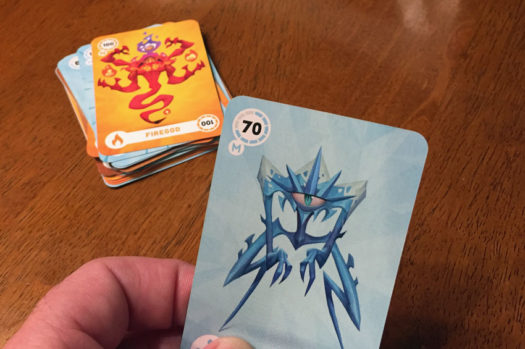
How does UNIMO score on our “Let’s Play Again” game meter?
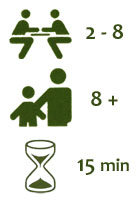 Unfortunately, UNIMO doesn’t score very well on our “let’s play again” game meter.
Unfortunately, UNIMO doesn’t score very well on our “let’s play again” game meter.
Yes, it’s simple to understand and easy to play and we enjoy the creative artwork. But the game play just feels too much like UNO for our taste.
It’s not that we don’t like UNO. In fact, we include UNO in our “10 Must Have Family Card Games” list and have a few copies in our game collection (Standard, UNO Attack, and Harry Potter UNO). It’s just that if we want to play a simple “match color and number” card game, we’ll play UNO itself.
Yet we know other families may feel differently.
If you’re looking for a bit of a twist from UNO, then UNIMO may be something you’d enjoy.

